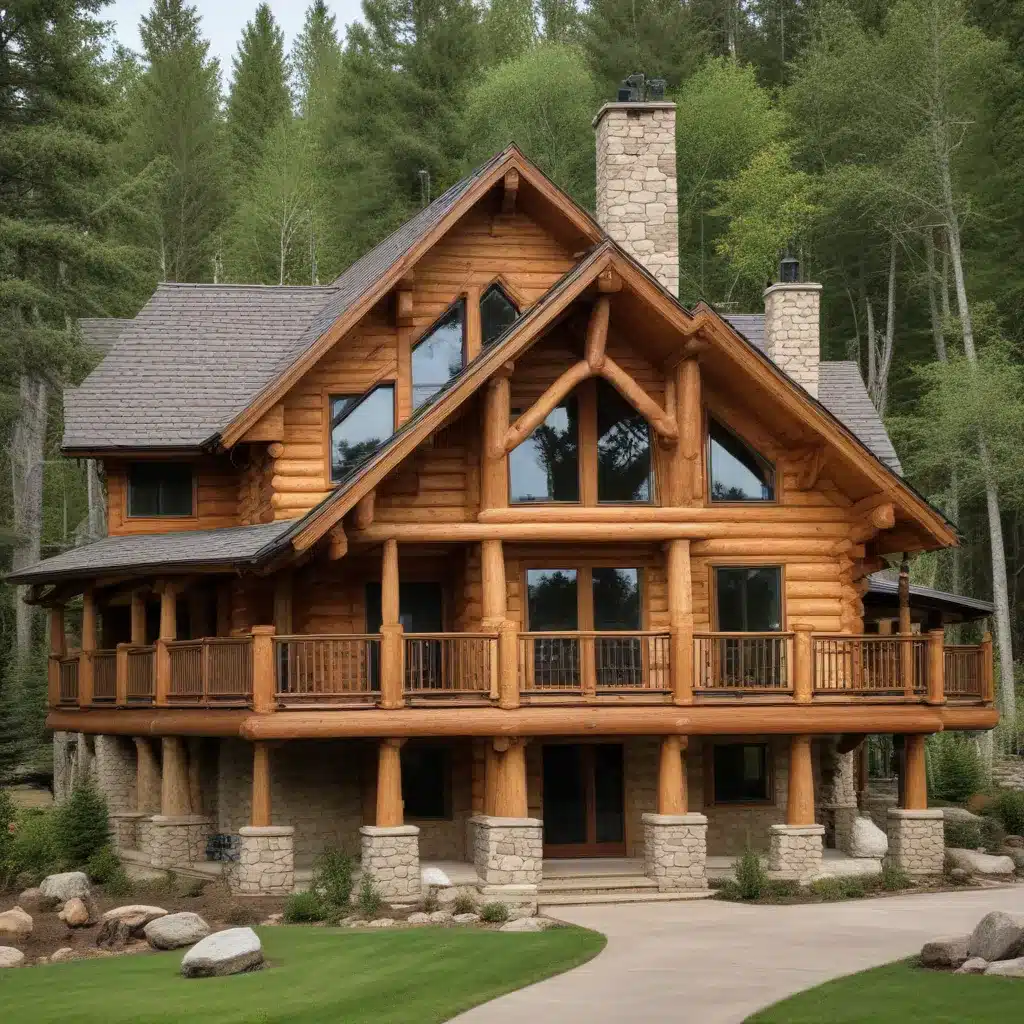
The Enduring Appeal of Log Homes
Log homes have long held a special place in the hearts of many Americans, offering a connection to the natural world and a sense of timeless craftsmanship. These unique structures, crafted from the very timber that surrounds them, possess a rustic charm that resonates with homeowners seeking a cozy and authentic living experience. However, maintaining the beauty and structural integrity of a log home requires a dedicated approach to preservation and restoration.
In this comprehensive guide, we’ll explore the best practices for log home construction, focusing on eco-friendly materials, energy-efficient design, and cost-effective maintenance strategies. By understanding the intricacies of log home care, homeowners can ensure their dream home remains a haven of warmth and comfort for generations to come.
Sustainable Log Home Construction
The foundation of a well-built log home lies in the quality of the materials used and the attention to detail during the construction process. When it comes to log home building, sustainability is a key consideration, as homeowners seek to minimize their environmental impact while enjoying the timeless beauty of these structures.
Sourcing Eco-Friendly Timber
One of the primary concerns in log home construction is the responsible sourcing of timber. Many modern log home builders have embraced the use of sustainable, locally-sourced wood species, such as Douglas Fir, Western Red Cedar, and Hemlock, which are known for their durability and natural resistance to decay. By prioritizing these eco-friendly timber options, homeowners can ensure that their log home is built with materials that have a minimal environmental footprint.
Efficient Log Home Design
In addition to the choice of timber, the design of a log home plays a vital role in its long-term sustainability. Proper planning and orientation can maximize energy efficiency, reducing the home’s reliance on fossil fuels and minimizing the overall environmental impact. Features like strategically placed windows, passive solar design, and high-performance insulation can significantly improve the home’s thermal performance, keeping it comfortable and energy-efficient year-round.
Craftsmanship and Attention to Detail
The quality of craftsmanship is another crucial element in the longevity and sustainability of a log home. Experienced log home builders understand the importance of precise joinery, careful log selection, and meticulous attention to detail. By employing traditional techniques and using the highest-quality materials, these skilled professionals can create log homes that not only look stunning but also withstand the ravages of time and weather.
Maintaining the Beauty of Log Homes
Preserving the beauty and structural integrity of a log home requires a comprehensive maintenance plan that addresses both the exterior and interior of the structure. From annual inspections to strategic repairs, homeowners must be proactive in their approach to ensure their log home remains a cherished sanctuary for years to come.
Exterior Maintenance
The exterior of a log home is the first line of defense against the elements, and regular maintenance is essential to prevent weathering, rot, and structural damage. This includes tasks such as:
- Log Cleaning and Preservation: Regularly cleaning the log surfaces with approved products and applying specialized preservatives can protect the wood from the damaging effects of sun, rain, and insects.
- Chinking and Caulking: Maintaining the chinking (the material used to fill the gaps between logs) and caulking around windows, doors, and other openings is crucial for weatherproofing and preventing air and moisture infiltration.
- Roof and Flashing Inspection: Regularly inspecting the roof and ensuring proper flashing around chimneys, windows, and other penetrations can prevent water damage and related issues.
- Stain and Finish Reapplication: Reapplying high-quality stains and finishes on a periodic basis helps to maintain the visual appeal of the log home’s exterior while providing an additional layer of protection.
Interior Maintenance
While the exterior of a log home demands a significant amount of attention, the interior should not be overlooked. Proper maintenance of the interior can help preserve the warmth and charm of the living spaces while ensuring the overall structural integrity of the home.
- Wood Treatments: Applying specialized wood preservatives and treatments, such as borate-based solutions, can help prevent the growth of mold, mildew, and wood-boring insects, which can compromise the structural stability of the logs.
- Humidity and Temperature Control: Maintaining consistent humidity and temperature levels within the log home can help prevent the wood from drying out, cracking, or warping over time.
- Interior Finishes: Regularly inspecting and reapplying interior stains, varnishes, and sealants can enhance the visual appeal of the log home’s interior surfaces and protect them from wear and tear.
Cost Considerations
The cost of maintaining a log home can vary depending on the size of the structure, the condition of the logs, and the extent of the necessary repairs. On average, homeowners can expect to spend between $2,000 to $5,000 annually on routine maintenance and preservation, with more extensive repairs or restoration work ranging from $10,000 to $50,000 or more.
It’s important to note that the initial investment in a high-quality log home construction and the use of eco-friendly materials can help minimize long-term maintenance costs. By prioritizing sustainability and attention to detail during the building process, homeowners can enjoy the timeless beauty of their log home while reducing the financial burden of ongoing upkeep.
Embracing the Future of Log Home Living
As the demand for sustainable and energy-efficient living solutions continues to grow, the future of log home construction and maintenance remains bright. By embracing innovative building techniques, utilizing renewable materials, and implementing comprehensive maintenance strategies, homeowners can ensure that the enduring charm and structural integrity of log homes endure for generations to come.
Whether you’re a seasoned log home owner or considering the construction of your dream log cabin, understanding the best practices for preserving these unique structures is essential. By investing in the long-term care of your log home, you can enjoy the warmth, comfort, and connection to nature that these beloved structures have to offer, while contributing to a more sustainable future.


